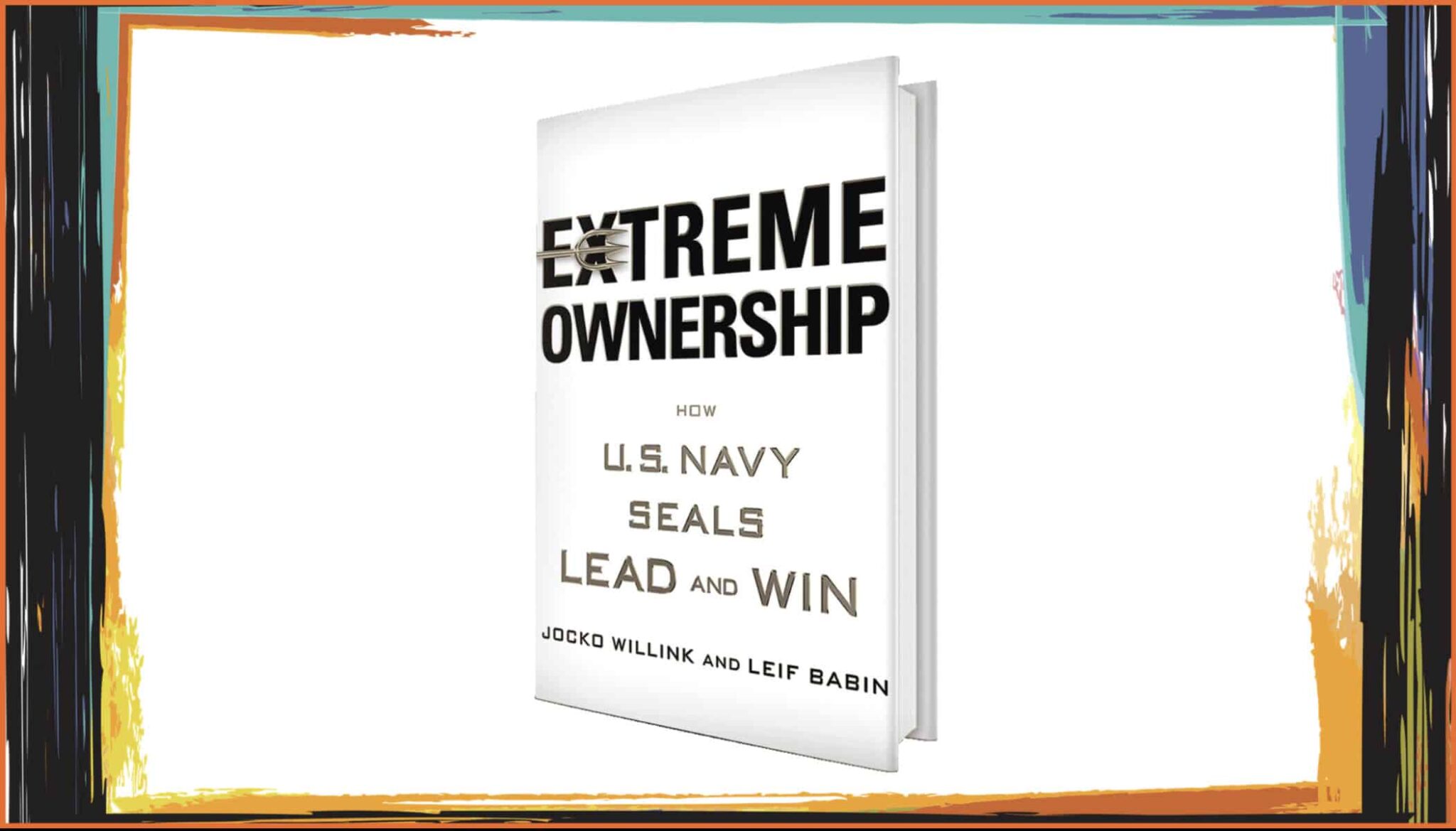Being an avid book reader, I come across a number of leadership books. And yet, “Extreme Ownership: How Navy Seals Lead and Win” is one book that has stayed with me ever since I first read it. For anyone in the leadership development industry looking to be inspired, I’d say this is a must read.
Co-written by Jocko Willink and Leif Babin – two celebrated Navy Seals themselves, whose military service included combat in the Iraq war, as commanders of SEAL Team 3’s Task Unit Bruiser that fought in the Ramadi, Iraq, it is a treasure trove of lessons. And, here are some of my favourite leadership lessons I personally picked up from this book –
1. Extreme Ownership
Table of Contents
In the world of Navy SEALS, a blue-on-blue is the worst possible mistake you can make. Blue-on-blue is an attack made by one’s own side that accidently harms one’s own forces.
An American sniper team had positioned themselves in one of the houses when Jocko’s team barged in, taking them for enemy. To his surprise Jocko found one of the Seal Platoon Chief staring him back in the face. The fight before the barging in, left one friendly soldier killed and many wounded.
While there were many misses that led to such a situation and for each of the misses, there was someone who owned it up, Jocko squarely took the entire blame on himself, saying it was his role to ensure nothing went wrong. A great example of a leader taking complete ownership.
If a team member is not clear on his role, the onus is on the leader. Yet, if the leader himself is not clear or convinced to execute an order, he must proactively ask and not wait or blame his superiors. In either case, the leader must take complete ownership and seek ways to bridge the gap. Despite Jocko risking his reputation by owning such blunder, his genuine acceptance of the blame was received with respect from his team and superiors.
2. There are no bad teams, only bad leaders

In 2018, Leif Babin led a training for new generation of SEAL candidates, which included the toughest part – the Hell Week. Of 200 candidates, half quit just after two days of Hell Week. Teams of seven were assigned a WWII-relic inflatable boat and the senior-most ranking sailor became the boat crew leader. As the training progressed, a clear pattern emerged. Boat Crew II would lead in almost every race, and Boat Crew VI kept struggling, almost always ending up last.
Before start of one race, the Senior Chief Petty Officer decided to swap the leaders of Boat Crews II and VI. Over the next hour of races, a surprising change happened – while Boat Crew II still performed well (though never took the first spot); the laggard Boat Crew VI won nearly every race!
Babin adds, “Had I not witnessed this amazing transformation, I might have doubted it.” How did this happen? The single most factor in a team’s winning or losing is “Leadership”. The leader must completely own the problems the team faces and must help find a solution.
3. Question, if not clear
The order from the top brass was clear. For every mission henceforth, the SEALs were to carry alongside with them Iraqi soldiers. The whole unit including Jocko was very uncomfortable. Looking at the skill level and even the grooming of Iraqi soldiers, taking them alongside meant a huge risk to the Seals. Jocko was to address his team on this.
But he himself was not convinced. He then reached out and sought to explore the “why”. Why did the authorities ask that? Would they consciously want their men to be put under danger? The answer was “No”. On inquiry, he figured out that unless these Iraqi soldiers were “trained-on-the-job”, they would never be able to defend on their own, even if US forces effectively diminish the power of insurgents. Suddenly, it all became very clear.
Quite often, very senior leaders are revered. For people down the line, asking question to them seem like undermining their position. It could be a daunting task. But if you yourself are not clear, you will not be able to convince, especially those, in the front line.
4. Check the Ego

While some amount of ego is good, it drives us to excel, it is when ego clouds our judgement and prevents us to see the world as it is, that it becomes destructive. Personal agendas become more important than the team and the mission.
An unchecked ego prevents right assessment of self, of the team, as well as of the situation, making one vulnerable to call wrong shots, putting the team in danger.
5. Cover and Move
‘Cover and Move’ is one of the first laws of combat. One member of the team lays down cover fire, allowing the other person to move. Put simply, Cover and Move means teamwork.
Quite often, teams are so focussed on their own tasks they ignore other teams which have different tasks but the same overarching mission. They even start competing (us vs them) and an atmosphere of animosity sets-in. When a setback happens, in such an atmosphere, the teams start blaming each other, thus becoming dysfunctional.
Have you come across such situations in your work life? Why does that happen? It seems like common sense that if different teams have the same overarching mission, they should be helping each other, rather than competing. Each team should treat the other as part of “their bigger team” and help, rather than point fingers at each other.
Yet we all have seen this happening multiple times in our careers. This is where the role of the leader becomes important to continually remind everyone of the greater strategic mission.
6. Keep it Simple

When plans and orders are too complex, people will not be able to understand them. And if they do not understand, what are the chances that they would execute? Plans and orders should be communicated in a manner that is simple, clear, and concise. Everyone should know his role in the mission.
The true test of a good plan is not whether the senior officer is impressed, but whether the troops who are going to execute the operation, understand it.
7. Prioritise and execute
In war and in corporates, there are times when one gets completely overwhelmed with the countless challenges demanding immediate attention. Depending on the severity, one can get into a state of not being able to move or think. It is like the proverbial “deer caught in the headlights” phenomenon.
How would you respond, if caught in such a situation?
Seals being the special operation force, quite often find themselves in extremely demanding and overwhelming situations. They are taught to Relax. Look Around. Make a Call.
They are taught to identify the highest priority task and execute it. Once done, move to the next highest priority. They are also known for extremely detailed planning to think of all the contingencies and plan for them. When, they encounter one, they already know what to do.
8. Delegate

No person has the cognitive capacity, the physical presence, or the knowledge of everything happening, to lead in an effective manner. Still, many leaders try to control everything and everyone by themselves.
For Seal training for urban combat, young seal officers are trained in a shoot-house, called a “kill house”. It is critical for the leader to know where he needs to place himself. Sometime young seal officers check every room personally for clearance. This makes them too involved in details and they lose the situational awareness of what is going on in other rooms.
If they are too cut-off from the action, their decisions may be detached from the ground reality. The right amount of involvement is somewhere in the middle.
Good delegation means that the person to whom a task is delegated should not ask what they should do but rather inform what they would be doing.
Lesson 9: Discipline equals freedom
Discipline and Freedom often seem like opposing forces. People who have inculcated discipline in any sphere of their lives, would vouch that, discipline equals freedom.
Here I would like to quote a personal experience:
Like many, I have been trying to go for morning walks. I would do it 3-4 times in a week. Every day as the alarm went off, it was a painful mulling – should I go for walk or go back to sleep? Depending on whether the guilt won or the inertia, I would walk out or go back to sleep. Even on days when I got out, it was pushing myself a lot. It was lot of effort. One day, I just decided to change this.
On 1st August 2020, I decided to walk every single day, even if it was for half the targeted distance. This brought an unprecedented clarity in the morning that I must go out. After a few days, it became a far easier, and soon it became a ritual. This discipline has set me free. Going for a walk every day now has becomes effortless for me.
What next?

If you look at all the 9 lessons, it might be overwhelming. Refer to Lesson 7. Pick the one with highest priority for you, at this point. Start working on it till you become a little better at it. Once done, pick up the next. I am sure practising these lessons would sharpen your leadership skills.










